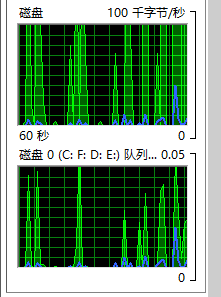前言
Java 中最通用的日志模块莫过于 Log4j 了,在 python 中,也自带了 logging 模块,该模块的用法其实和 Log4j 类似。日志是记录操作的一种好方式。但是日志,基本都是基于文件的,也就是要写到磁盘上的。这时候,磁盘将会成为一个性能瓶颈。对于普通的服务器硬盘(机械磁盘,非固态硬盘),Python日志的性能瓶颈是多少呢?今天我们就来测一下。下面话不多说,来一起看看详细的介绍:
测试代码如下:
|
1
2
3
4
5
6
7
8
9
10
11
12
13
14
15
16
17
18
19
20
21
22
23
24
25
26
27
28
29
30
31
32
33
34
35
36
37
38
39
40
41
42
43
44
45
46
47
48
49
50
|
#! /usr/bin/env python #coding=utf-8 # ============================ # Describe : 给平台提供的日志 # D&P Author By: 常成功 # Create Date: 2016/08/01 # Modify Date: 2016/08/01 # ============================ import time import os import logging print "Start test ...."s_tm = time.time() test_time = 10.0 # 测试时间10秒 e_tm = s_tm + 10j = 0 pid = str(os.getpid()) while 1: now_time = time.time() j += 1 if now_time > e_tm: break # 生成文件夹 lujing = "d:\\test_log" if not os.path.exists(lujing): os.mkdir(lujing) fm2 = '%Y%m%d' YMD = time.strftime(fm2, time.localtime(now_time)) filename = 'recharge_' + YMD + '.log' log_file = os.path.join(lujing, filename) t = "\t" log_msg = str(j) +t+ str(now_time) +t+ pid the_logger = logging.getLogger('recharge_log') f_handler = logging.FileHandler(log_file) the_logger.addHandler(f_handler) the_logger.setLevel(logging.INFO) # To pass exception information, use the keyword argument exc_info with a true value the_logger.info(log_msg, exc_info=False) the_logger.removeHandler(f_handler) rps = j/test_time print rps, "rows per second" |
结果为:
Start test ....
2973.0 rows per second

Python的logging性能:
7200转的机械磁盘,测了几次,每秒的能写入日志的行数(每行就是一条日志),数量基本在 2800-3000 之间。此时,磁盘IO基本已经跑满。(在3.3Ghz的CPU上,CPU占用大约40%)。

Python的logging多进程:
python 的 logging模块,是线程安全的。但对于多进程的程序来说,怎么去写日志文件呢?我的解决办法是,每个进程的PID,写一个单独的日志文件。再用算法把所有进程的日志合并起来,生成新的日志。
提示:由于磁盘IO已经到达瓶颈,所以多进程并不能提高日志性能。高性能日志,需要用缓存,或者分布式日志。
总结
以上就是这篇文章的全部内容,希望本文的内容对大家的学习或者工作能带来一定的帮助,如果有疑问大家可以留言交流,谢谢大家对服务器之家的支持。
原文链接:http://blog.csdn.net/chenggong2dm/article/details/52094410










